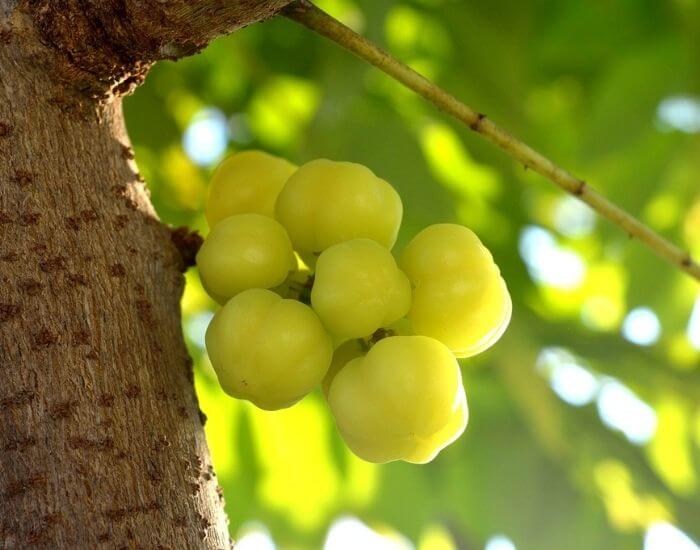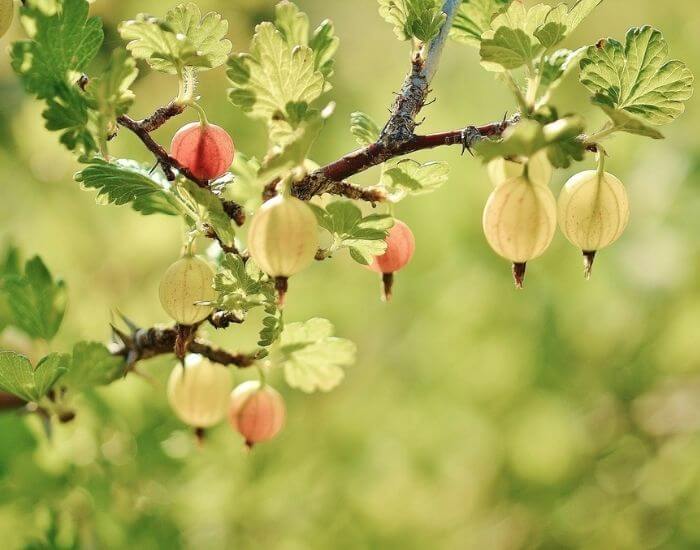When we think of fruits, the image that often comes to mind is that of juicy, succulent and colorful produce. However, there exists a fascinating category of fruits that break this stereotype with their unique and intriguing feature – spikes.
These prickly fruits not only capture our attention with their unconventional appearance but also offer distinctive flavors and textures that are worth exploring.
From the notorious durian to the peculiar rambutan, in this article we will delve into the world of fruits with spikes and discover what makes them so captivating.
List of Fruits with Spikes
1. Durian

Durian is a fruit that belongs to the family Malvaceae and is native to Southeast Asia. It is well-known for its distinctive appearance, characterized by large, greenish-brown spikes covering its thick rind.
These spikes serve as a natural defense mechanism, protecting the creamy flesh inside from potential predators. Despite its intimidating exterior, durian has gained popularity for its unique flavor and aroma.
The scent of durian is often described as pungent and overpowering. Some people find it extremely unpleasant, comparing it to rotting onions or sweaty socks.
However, this strong odor does not deter avid durian enthusiasts who appreciate its complex taste.
The flesh of the fruit is smooth and custard-like with a rich sweetness balanced by hints of bitterness. Many consider it a delicacy and enjoy consuming it fresh or incorporating it into various desserts like ice cream or cakes.
Although beloved by many in Southeast Asia, durian’s distinct smell has caused controversy in some countries where it has been banned from public transportation or hotels due to complaints from non-durian eaters about its offensive odor lingering in enclosed spaces.
Nevertheless, those who can overcome the initial olfactory challenge often discover a unique tropical treat hidden beneath the spiky armor of this intriguing fruit.
2. Pineapple
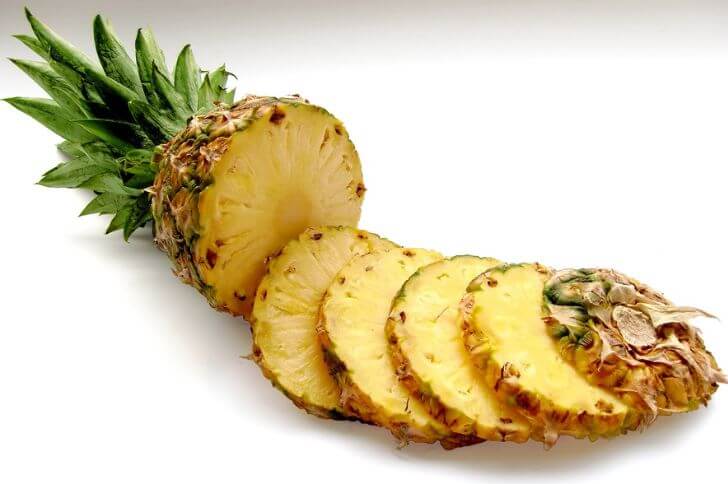
One of the fruits that immediately comes to mind when thinking about fruits with spikes is the pineapple. This tropical fruit is instantly recognizable for its spiky, rough outer skin that hides a sweet, juicy interior.
The pineapple’s spiky appearance is actually formed by the overlapping scales or eyes on its surface. These eyes are remnants of the flower’s individual berries that fused together to create this unique fruit.
In addition to being enjoyed fresh or as part of various dishes like salads or desserts, pineapples can also be used in other interesting ways.
For instance, pineapple juice can be extracted from the fruit and used as an ingredient in cocktails or smoothies due to its refreshing taste. Pineapple can also be grilled or roasted to enhance its natural sweetness while adding a smoky flavor profile.
Moreover, this versatile fruit can even be incorporated into savory recipes like stir-fries or salsas to balance out flavors with its acidity and provide a tropical twist to traditional dishes.
3. Lychee
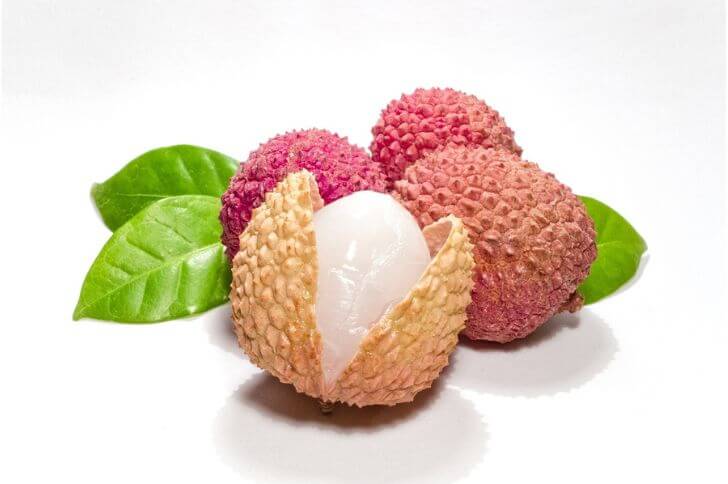
Another fruit that belongs to the category of fruits with spikes is the lychee. Native to Southeast Asia, lychee is a small round fruit covered in a bumpy and rough skin.
The outer layer of the lychee is typically reddish or pinkish in color, which becomes more vibrant as it ripens. Underneath its spiky exterior lies a translucent white flesh that is juicy and sweet, offering a delightful burst of flavor.
The unique texture and taste of lychees make them an intriguing addition to various dishes and beverages. They are commonly enjoyed fresh, peeled, and eaten on their own or added to fruit salads for an extra touch of sweetness.
Lychees are also popularly used in cocktails, smoothies, and tropical desserts due to their refreshing nature. Moreover, this exotic fruit contains several essential nutrients like vitamin C, dietary fiber, and antioxidants.
With its striking appearance and delectable taste profile, it’s no wonder why lychee has gained popularity not only in Southeast Asia but also across the globe. Its spiky exterior serves as nature’s way of protecting the delicate treasure within – a juicy treat that brings both visual appeal and satiating flavors to any culinary experience.
4. Opuntia
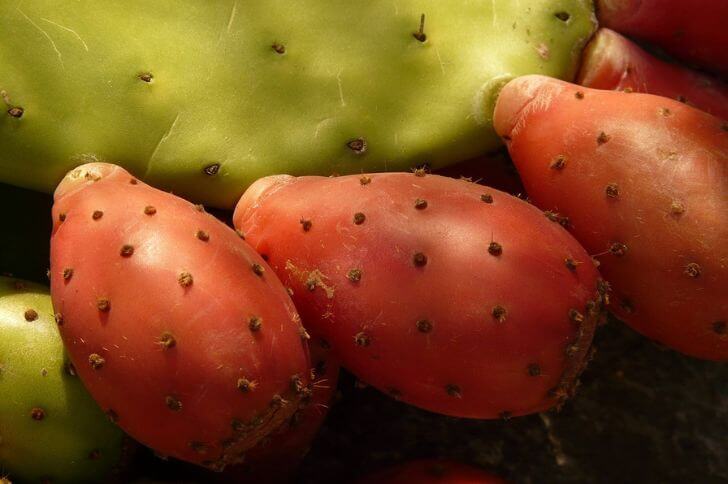
Opuntia, commonly known as prickly pear or cactus fruit, is a unique and intriguing member of the fruit family due to its spiky exterior.
Native to the Americas, particularly in arid regions, Opuntia species have adapted to survive harsh conditions with their thorny defenses. Despite their intimidating appearance, these fruits are highly prized for their vibrant colors and sweet taste.
The spines on Opuntia fruits serve multiple purposes. First and foremost, they act as a deterrent against potential predators such as animals or insects that might otherwise be tempted by the juicy flesh within.
The sharp spikes also help reduce water loss from the fruit by creating tiny air pockets that trap moisture close to the surface. Moreover, some experts suggest that these prickles may provide some protection against excessive sunlight exposure.
When it comes to consuming Opuntia fruits, caution is necessary due to their thorns. However, once handled properly and safely peeled or sliced off, what lies beneath is a succulent treat worth savoring.
Prickly pears can be eaten raw or used in various culinary creations such as jams, jellies, juices, salads, and even cocktails. So next time you encounter an Opuntia fruit with spikes – don’t let its appearance discourage you from indulging in its deliciousness!
5. Kiwano
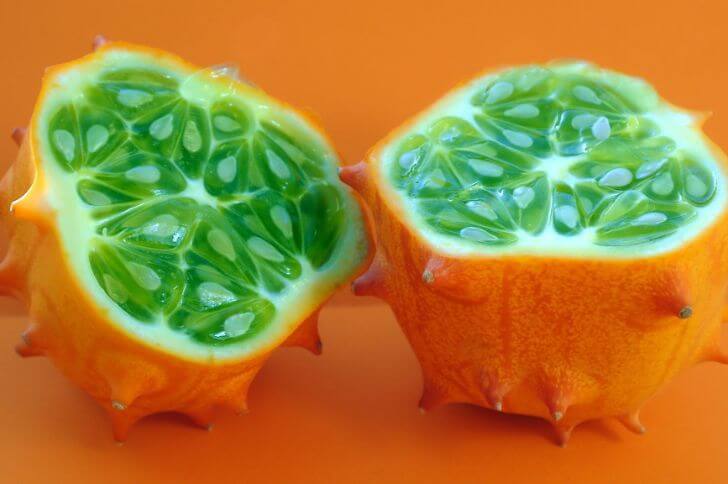
One fruit with spikes that is gaining popularity is the Kiwano, also known as the horned melon. This unique fruit has a bright orange spiky exterior that resembles a small oval-shaped melon.
On the inside, the kiwano has vibrant green jelly-like flesh with edible seeds. The taste of Kiwano is often described as a combination of banana, cucumber, and lime, making it both refreshing and tangy.
Not only does the Kiwano look intriguing, but it also offers various benefits. Additionally, this exotic fruit is low in calories and packed with fiber.
Despite its appearance and nutritional value, the Kiwano can be quite challenging to incorporate into recipes due to its unique flavor profile.
However, many people enjoy eating it on its own by scooping out the flesh with a spoon or adding slices to salads or smoothies for an extra burst of color and flavor. With its spiky exterior and refreshing taste, the Kiwano definitely stands out among other fruits with spikes.
6. Jackfruit
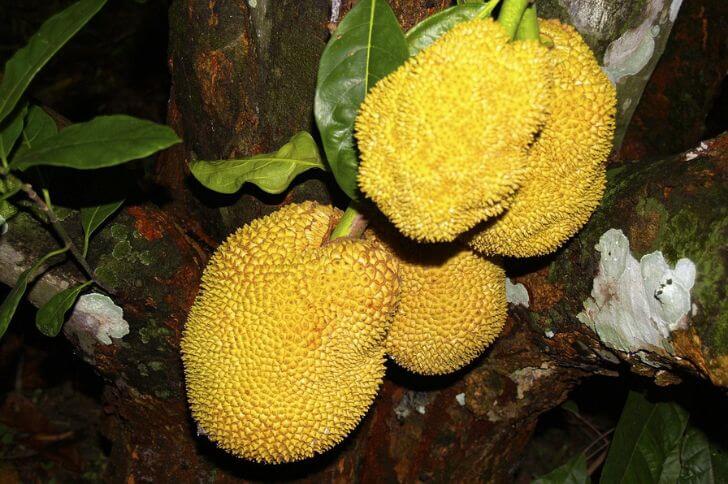
One of the most intriguing fruits with spikes is the jackfruit. Native to South Asia, this colossal fruit can reach an astonishing weight of up to 80 pounds!
Its exterior is covered in a knobby green skin that is dotted with numerous spiky protrusions, making it quite intimidating at first glance. However, once you open up a ripe jackfruit, you will be greeted by a fragrant aroma and hundreds of sweet golden-yellow pods.
The jackfruit’s unique texture and taste make it a versatile ingredient in both savory and sweet dishes.
When cooked unripe, its flesh becomes firm and stringy, resembling pulled pork or chicken. This quality has earned it the nickname vegetable meat among some vegetarian communities who use it as a substitute for meat in various recipes.
On the other hand, when fully ripened, the soft and juicy pods have a tropical flavor reminiscent of pineapple and mango with hints of banana.
Apart from its deliciousness, jackfruit also offers several benefits. It is packed with essential nutrients such as vitamin C, potassium, and dietary fiber.
With all these qualities combined — its striking appearance, versatility in cooking, delightful taste profiles — there’s no wonder why this spiky fruit has gained popularity worldwide.
7. Rambutan
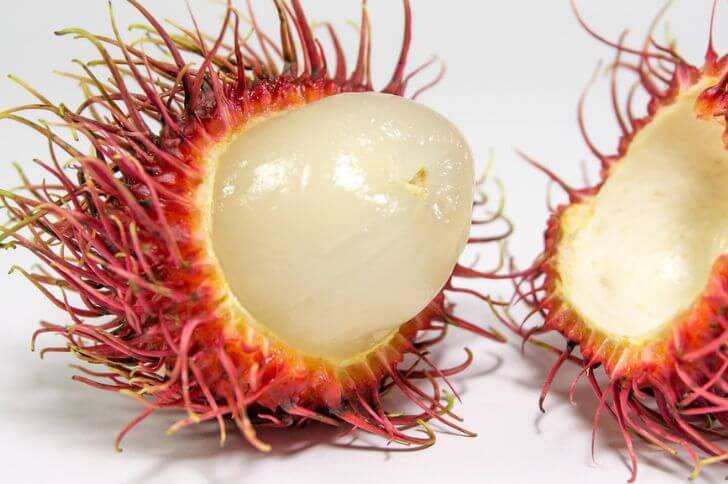
Rambutan is a tropical fruit with a distinctive appearance due to its spiky exterior. Native to Southeast Asia, it belongs to the same family as lychee and longan fruits.
The name rambutan translates to hairy in Malay, which perfectly describes its hairy red or yellow skin that is covered in soft flexible spines.
Though the spikes may look intimidating, they are actually quite harmless and can be easily peeled away to reveal the sweet and juicy flesh inside.
The flesh of the rambutan is translucent white or pale pink, similar in texture to a grape but firmer. It has a mildly sweet flavor with notes of acidity reminiscent of grapes or lychees.
The taste can vary slightly depending on the variety, ranging from more sour to sweeter profiles. To enjoy this exotic fruit, one must simply cut through the skin and gently pry it open to extract the juicy orb within.
With their unique appearance and delightful taste, rambutans make for an exciting addition to any fruit salad or tropical dessert.
Related Read: Check types of hairy fruits
8. Salak
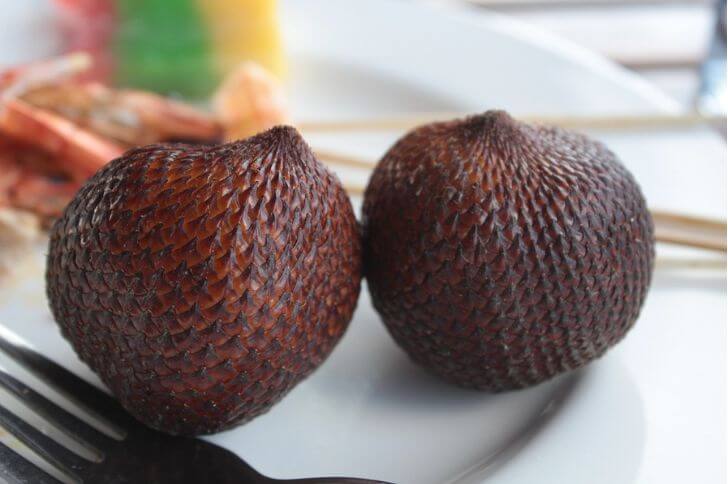
Salak, also known as snake fruit, is a fascinating tropical fruit that falls under the category of fruits with spikes. Native to Indonesia and Malaysia, it gets its name due to its reddish-brown scaly skin that resembles snake scales.
The outer layer of salak is quite rough and can be challenging to handle without getting pricked by the sharp spikes. However, once you manage to peel off the tough skin, you are rewarded with a juicy and sweet flesh inside.
The taste of salak is often described as a combination of flavors like apple, pineapple, and banana. It has a slightly tangy yet sweet profile that makes it incredibly addictive for fruit lovers.
Salak is not only enjoyed fresh but also used in various culinary preparations such as jams, candies, desserts, and even wine production.
Rich in vitamins A and C, dietary fiber, potassium, and antioxidants like beta-carotene and lycopene, salak offers numerous benefits along with its unique taste.
In addition to being delicious and nutritious, salak has gained popularity among adventurous food enthusiasts due to its peculiar appearance.
Its distinctive spiky exterior makes it stand out in markets and grocery stores around the world. Moreover, its exotic charm adds an element of surprise when served at parties or included in fruit baskets or gift hampers. So next time you come across this intriguing fruit with spikes called salak/snake fruit; don’t shy away from giving it a try!
9. Horse chestnut fruits
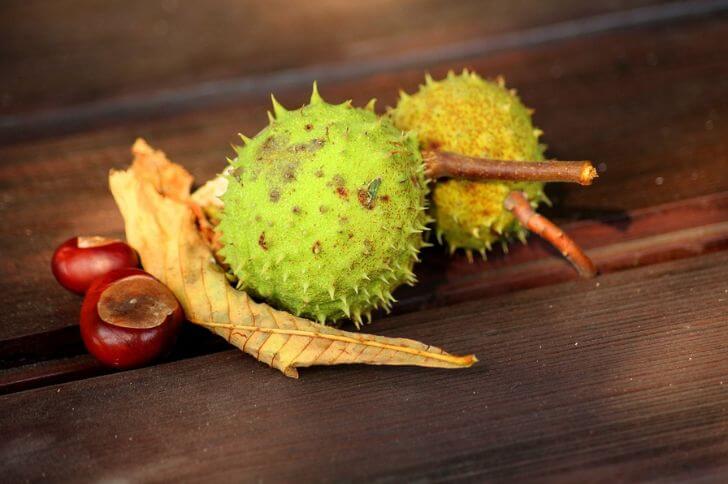
Horse chestnut fruits, also known as conkers, are unique in their appearance due to the presence of spikes. These spiky fruits are encased in a hard, green outer shell that splits open when mature to reveal the shiny brown seed inside.
The spikes on horse chestnut fruits serve several purposes. Firstly, they act as a defense mechanism against predators by making it difficult for them to access the seeds.
Secondly, these spikes aid in dispersal as they can catch onto fur or clothing and be carried away to new locations.
The spikes on horse chestnut fruits are not only functional but also add an interesting aesthetic appeal. They create a visually striking contrast against the smooth surface of the seed and give the fruit a characteristic look.
Despite their spiky exterior, horse chestnut fruits are appreciated for their beauty and often used in crafts and decorative arrangements during autumn months. However, it is important to handle these fruits with care as the spikes can cause irritation or injury if not handled properly.
Whether admired for their aesthetics or utilized in various artistic creations, the unique characteristics of horse chestnut fruits make them an intriguing addition to nature’s collection of spiked treasures.
10. Gac fruit
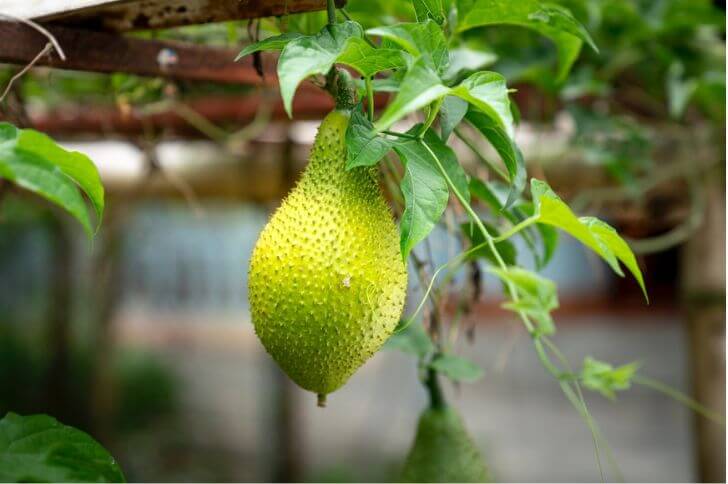
One of the fascinating fruits with spikes is the gac fruit. Native to Southeast Asia, this unique fruit is known for its vibrant red color and spiky exterior. The gac fruit belongs to the same family as pumpkins and watermelon, but it stands out with its distinct appearance.
While the spiky exterior may make it seem intimidating at first glance, opening up a gac fruit reveals a bright orange flesh filled with seeds coated in red pulp.
The flavor of the gac fruit has been described as a combination of mango and papaya, with a slightly bitter aftertaste. In Southeast Asian cuisine, it is commonly used to make traditional dishes like rice porridge or added to soups for its nutritional value and unique taste.
11. Red dragon fruits
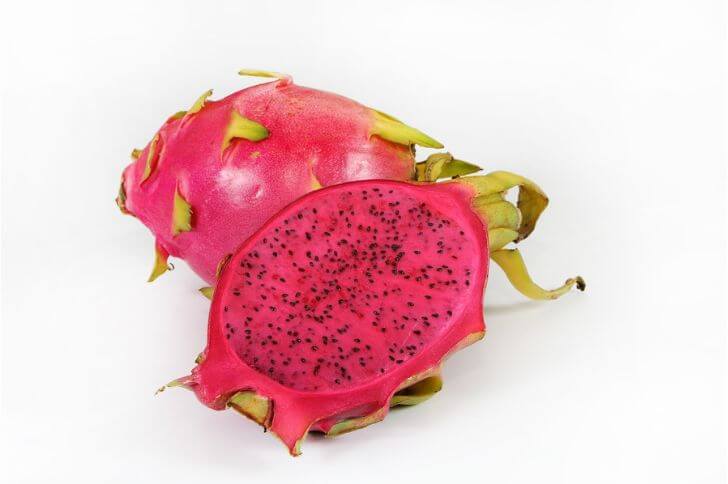
One of the most fascinating fruits with spikes is the red dragon fruit. With its vibrant pinkish-red outer skin and green spiky scales, this exotic fruit is as visually stunning as it is delicious.
Native to Central America and now widely cultivated in Southeast Asia, the red dragon fruit is known for its unique appearance and numerous benefits.
The taste of red dragon fruits can be described as subtly sweet with a hint of tanginess. Its flesh has a texture similar to kiwi but is softer and more refreshing.
It can be enjoyed on its own or used in various dishes like smoothies, salads, or even added to cocktails for an extra burst of flavor. Whether you’re seeking a nutritious snack or looking to add some color to your culinary creations, the red dragon fruit deserves a spot on your shopping list!
12. Soursop
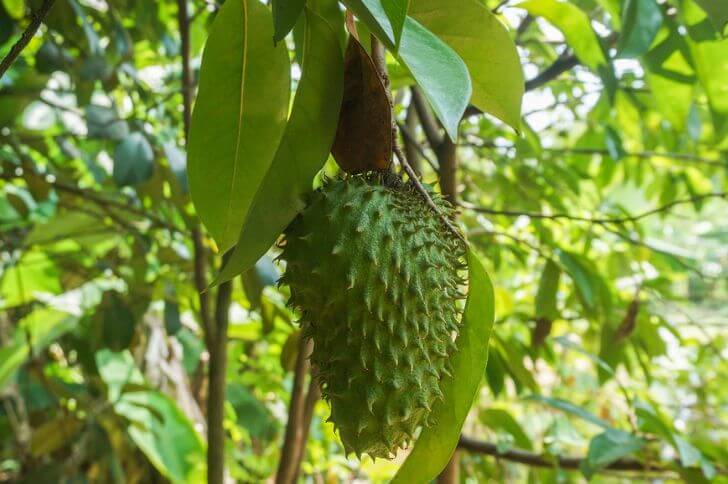
One such fruit with spikes that is gaining popularity for its benefits is the soursop. Also known as graviola, this tropical fruit is native to Central and South America and has been used for centuries. The spiky green exterior of the soursop hides a creamy white flesh that is sweet and tangy in taste.
13. Chayote

One fruit that falls under the category of fruits with spikes is chayote. Also known as vegetable pear or mirliton squash, chayote is a green, wrinkled fruit that belongs to the gourd family. It has a unique appearance with its rough, spiky skin and pear-like shape.
Chayote is native to Mexico but is now widely cultivated in various tropical and subtropical regions around the world. Despite its prickly exterior, chayote has a mild and crisp flesh that resembles cucumber or zucchini in taste and texture. The inner seed of the fruit can also be eaten after boiling or roasting.
In terms of culinary use, chayote can be prepared in numerous ways – it can be consumed raw in salads, pickled for added tanginess, boiled and mashed as a side dish, or even used as a substitute for apples in pies and desserts due to its natural sweetness when cooked.
In conclusion, fruits with spikes are a unique and fascinating category of plants. From the fierce-looking durian to the exotic rambutan and the prickly pear cactus, these fruits not only provide an interesting visual appeal but also offer various benefits.
While some may find their appearance intimidating, it is important to remember that these spikes serve as a natural defense mechanism for the fruit to protect itself from predators. Whether you’re adventurous enough to try them or simply admire their beauty, exploring fruits with spikes can be an exciting journey into the world of botanical wonders.
So next time you come across one of these intriguing fruits, don’t hesitate to give them a try or include them in your fruit basket – you might just discover a new favorite!
sources:
Hi There,
My name is Jenny. I’m the Chief Editor at Try Green Recipes and besides making yummy and healthy foods for my kids, grandkids, and friends. I’m new to the blogging world but I believe what I have to share is unique and will bring joy to your home. If you are adventurous and want try something tasty, let’s get started.
